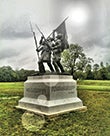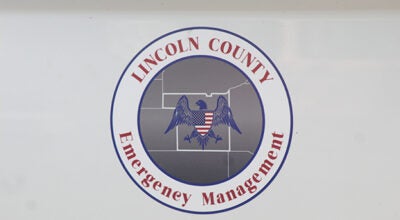Doctor’s sculpture unveiled at Shiloh: Local OBGYN creates state’s memorial at national park
Published 10:24 pm Saturday, October 10, 2015
A Brookhaven sculptor solidified Mississippi’s place — as well as his talent — in our nation’s history when his work, the Mississippi State Memorial, was unveiled Saturday in Shiloh National Military Park.
Dr. J. Kim Sessums traveled to the park near Savannah, Tennessee, to attend the dedication of his bronze sculpture, which captures a reflection of Mississippi’s efforts in the civil war.
On April 6, 1862, Confederate soldiers stormed federal troops camped around Shiloh Hill. The bloody battle, which would lead to the control of the railroad junction in Corinth, lasted two days at the cost of 23,746 men who were killed, wounded or missing; 1,728 of them were Mississippians. This was the largest battle in the Mississippi Valley campaign.
In the sculpture, three Confederate soldiers proudly carry their flag into the battle. The color bearer is hit by a bullet and begins to fall as the flanking color guards reach for the flag and offer support to their fallen comrade. Sessums captures the moment of recoil and heroism.
“This grouping would seek to be an action composition, the Color representing all that the soldiers are fighting for and thus must not fall or be lost,” he wrote in his artist’s proposal for the project. “At the falling of the Color Bearer, the guards and their comrades are reminded in an instant of their reason to be in the midst of all the death and destruction around them … duty and honor to push forward to victory or death.”
Since the founding of the park in 1894 there have been monuments for Alabama, Arkansas, Illinois, Iowa, Kentucky, Michigan, Missouri, Texas and Wisconsin. Sessums’ sculpture will join as the tribute to Mississippi.
Sessums said to create a work to go in a national park was very humbling and an enormous honor, especially because there aren’t that many opportunities left for projects of this magnitude. National parks are similar to galleries and sculpture gardens, housing significant works from some of the best artists in recent history.
“As an artist you go to these national parks to see the great turn of 20th century figurative sculptures,” he said. “Not everyone can be there; pieces there last forever.”
Sessums is also the sculptor of the African American Monument at Vicksburg National Military Park and has also commissioned work for the Mississippi Sports Hall of Fame. He has produced bronze busts of Andrew Wyeth, Eudora Welty, Sonny Montgomery and the Rev. Billy Graham, all the while striving for the realistic. It doesn’t hurt that he has practiced medicine for 25 years. Somehow he strikes balance between his reputable identity as an artist and his career as a full-time OBGYN at King’s Daughters Medical Center.
As with his other works, Sessums conducted intense research to make sure every detail of the 8-foot bronze sculpture was true to the period. Studying civil war books, working with historians and even reading letters sent from soldiers who survived the battle informed his work, as did his understanding of anatomy. The result is a realistic depiction of fictional soldiers from the button on a soldier’s satchel to the bridle pike cutter atop the flagpole. To properly represent the physicality of the figures in a pose, Sessums had three men act out the scene as he took photos to study the exact muscular systems of each performer.
“Monuments attempt to express what is honorable and transcendent about and within our humanity,” wrote Sessums.
He said the monument is not about the Confederate cause but rather reflects a different part of our nation’s history with accuracy. Sessums referenced the adage that says “Those who cannot remember the past are condemned to repeat it.”
“All the elements are implemented to give an overall narrative,” Sessums said. He added that even though everything is historically accurate, the actual men are fictional and by doing this the piece does not reflect any individual, it reflects Mississippi Confederate soldiers as a whole. He is representing the anonymous Confederate solders, who lost their lives “struggling in the ultimate sacrificial way for a cause.”






